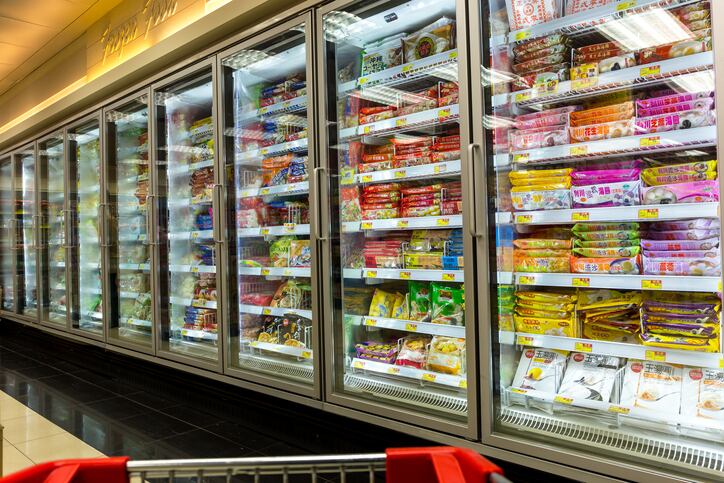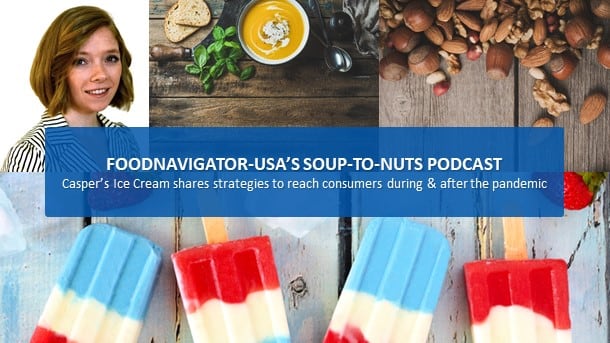“Prior to COVID-19, frozen foods were trending close to total store. As COVID-19 forced the ‘at home’ trend for work, school and meals, frozen foods have accelerated above total store growth” to the tune of 20.6% versus 13.5% in total edible sales in 2020, Christina Davis, senior manager, business intelligence at the full-service marketing and integrated sales provider Acosta, told FoodNavigator-USA.
Pointing to Acosta’s new report, ‘The Pandemic-Fueled Growth of Frozen Food,’ she added that sales of frozen food in 2021 through April 3 remain strong and continue to outpace total store and total edible sales.
“With the beginning of the pandemic in the rearview mirror, frozen foods still grew 2.6% versus only 1.2% for total edibles,” with some categories, including frozen seafood, dessert and breakfast performing even better with growth at over three times total edibles so far this year, she said.
“This data shows how consumers were driven to the frozen aisles for solutions across meal occasions and snacks,” and once they tried the products they discovered they liked them, she added.
For example, the report found during the pandemic 31% of consumers bought more frozen fruit, 29% bought more frozen vegetables, 28% purchased more frozen pizzas and snacks and 27% added more frozen entrees to their carts than before the coronavirus outbreak.
Frozen foods also performed well across usage occasions during the pandemic with 59% of consumers eating frozen food for dinner “often or nearly all of the time,” compared to 41% of consumers doing so at lunch and 38% at breakfast, according to the report.
Frozen breakfasts options have strong growth potential
Even though a smaller portion of consumers reached for frozen foods at breakfast compared to lunch or dinner, the category holds significant promise with strong household penetration, double-digit sales growth in 2020 over 2019 and higher sales growth than total frozen in 2021, according to Acosta.
“Frozen breakfast has 68% household penetration, with 18.1% sales growth in 2020 versus 2019,” which is slightly below total frozen food’s 20.6% growth, Davis said.
Since the new year, frozen breakfast has outperformed total frozen with 4% sales growth versus 2.6% for total frozen through April 3, she added, concluding: “the category is doing very well,” especially considering 25% of people skip breakfast.
Convenience, price & variety availability are top consumer priorities
Much of the growth in frozen breakfast during the pandemic has from consumer demand for easy, convenient and healthy meal solutions, but their priorities may shift slightly in 2021 as children return to school and some people return to the workforce – easing pressure on at home cooking slightly.
As this happens, shoppers likely will place a greater emphasis on price, product availability and variety as they shop the frozen aisle, according to Acosta.
Its research revealed that 50% of all US shoppers said low prices will be a top priority in 2021, while 45% said product availability will be a top priority and 42% noted variety.
Which consumer groups brands want to reach should influence how they respond to these priorities, according to Acosta. It notes that if brands want to appeal to Baby Boomers, promotions may be the way to go as 48% of this generation said this would be important to them post-COVID versus 37% of total US shoppers.
If they want to engage more with Millennials and Gen Z, Acosta’s research suggestions emphasizing convenience, which was listed as a key priority for 32% of this segment, versus 25% of total US shoppers.
Overcoming barriers
Regardless of who frozen food players want to reach, Davis said a key to maintaining and further accelerating sales will be tackling negative consumer perceptions about the health value of frozen products.
“The biggest barriers to buying frozen food remain similar to what they were pre-pandemic, including concerns about how healthy the products are, price and preference for fresh products,” she said. “Innovation and messaging focused on health, value and fresh will resonate with shoppers.”
She added the good news is that the pandemic prompted many consumers to try and appreciate the “tremendous innovation” that has occurred in frozen in recent years, and “now that shoppers have tried and repeated using frozen products, many will stick with them.”




